#AWS Lambda Tutorial for Beginners
Explore tagged Tumblr posts
Text

Unlock the potential of AWS Lambda with our expert tutorial from TAE(TutorialandExample.com). Dive deep into serverless computing, streamline workflows, and optimize your applications for scalability. Start learning today!
0 notes
Text
AWS Mastery Unveiled: Your Step-by-Step Journey into Cloud Proficiency
In today's rapidly evolving tech landscape, mastering cloud computing is a strategic move for individuals and businesses alike. Amazon Web Services (AWS), as a leading cloud services provider, offers a myriad of tools and services to facilitate scalable and efficient computing. With AWS Training in Hyderabad, professionals can gain the skills and knowledge needed to harness the capabilities of AWS for diverse applications and industries. Whether you're a seasoned IT professional or a beginner eager to dive into the cloud, here's a step-by-step guide to learning and mastering Amazon AWS.
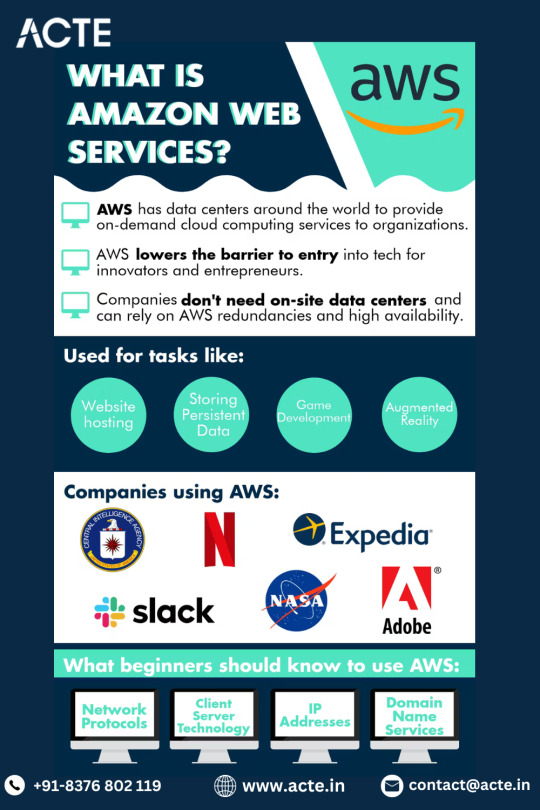
1. Start with AWS Documentation:
The foundation of your AWS journey begins with the official AWS documentation. This vast resource provides detailed information, tutorials, and guides for each AWS service. Take the time to familiarize yourself with the terminologies and fundamental concepts. Understanding the basics lays a solid groundwork for more advanced learning.
2. Enroll in AWS Training and Certification:
AWS provides a dedicated training and certification program to empower individuals with the skills required in today's cloud-centric environment. Explore the AWS Training and Certification portal, which offers a range of courses, both free and paid. Commence your AWS certification journey with the AWS Certified Cloud Practitioner, progressively advancing to specialized certifications aligned with your career goals.
3. Hands-On Practice with AWS Free Tier:
Theory is valuable, but hands-on experience is paramount. AWS Free Tier allows you to experiment with various services without incurring charges. Seize this opportunity to get practical, testing different services and scenarios. This interactive approach reinforces theoretical knowledge and builds your confidence in navigating the AWS console.
4. Explore Online Courses and Tutorials:
Several online platforms offer structured AWS courses. Websites like Coursera, Udemy, and A Cloud Guru provide video lectures, hands-on labs, and real-world projects. These courses cover a spectrum of topics, from foundational AWS concepts to specialized domains like AWS security and machine learning. To master the intricacies of AWS and unlock its full potential, individuals can benefit from enrolling in the Top AWS Training Institute. This training ensures that professionals gain the expertise needed to navigate the complexities of AWS, empowering them to contribute effectively to their organizations' digital transformation and success.
5. Build Projects and Apply Knowledge:
The true test of your AWS proficiency lies in applying your knowledge to real-world projects. Start small, perhaps by deploying a static website on Amazon S3. As you gain confidence, move on to more complex projects, such as configuring a virtual server on Amazon EC2 or creating a serverless application using AWS Lambda. Practical application solidifies your understanding and hones your problem-solving skills.
6. Join AWS Communities and Forums:
Learning is a collaborative effort. Joining AWS communities and forums allows you to connect with like-minded individuals, seek advice, and share your experiences. Platforms like the AWS Developer Forums provide a space for discussing challenges and learning from others' insights. Networking within the AWS community can open doors to valuable opportunities and collaborations.
7. Read AWS Whitepapers and Case Studies:
AWS regularly publishes whitepapers covering best practices, architecture recommendations, and real-world case studies. Delve into these resources to gain deeper insights into how AWS services are applied in diverse scenarios. Whitepapers provide a wealth of knowledge on topics such as security, scalability, and cost optimization.
8. Experiment with AWS CLI and SDKs:
Command Line Interface (CLI) proficiency is a valuable skill for any AWS practitioner. Familiarize yourself with the AWS CLI, as well as Software Development Kits (SDKs) for your preferred programming languages. Automating tasks through the CLI and integrating AWS services into your applications enhances efficiency and allows for more sophisticated configurations.
9. Attend AWS Events and Webinars:
Stay abreast of the latest AWS trends, updates, and best practices by attending AWS events, webinars, and conferences. These platforms often feature expert speakers, product announcements, and in-depth discussions on specific AWS topics. Engaging with industry leaders and experts provides valuable insights into the current state and future direction of AWS.
10. Stay Updated and Adapt:
The cloud computing landscape is dynamic, with AWS continually introducing new services and updates. Subscribe to AWS newsletters, follow AWS blogs, and listen to AWS-focused podcasts to stay informed about the latest developments. Continuous learning is key to adapting to the evolving cloud technology landscape.

In conclusion, mastering Amazon AWS is a journey that combines theoretical understanding, hands-on experience, and active participation in the AWS community. By following these ten steps, you can develop a comprehensive skill set that empowers you to leverage AWS effectively, whether you're building applications, optimizing processes, or advancing your career in the cloud.
2 notes
·
View notes
Text
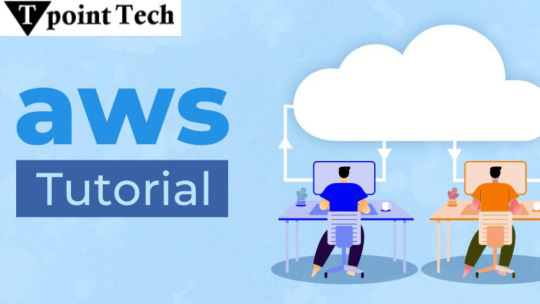
AWS Tutorial – Learn Cloud Computing with Amazon Web Services
Get started with cloud computing using AWS! This AWS tutorial covers key services like EC2, S3, Lambda, and more. Perfect for beginners and IT professionals aiming to build, deploy, and manage scalable applications in the cloud.
For more information, visit here: https://www.tpointtech.com/aws-tutorial
0 notes
Text
Where to learn cloud computing for free ?
💡 Where to Learn Cloud Computing for Free? Your First Steps in 2025

So you’ve heard about cloud computing. Maybe you’ve seen the job titles—Cloud Engineer, DevOps Specialist, AWS Associate—or heard stories of people getting hired after just a few months of learning.
Naturally, you wonder: "Can I learn cloud computing for free?"
Yes, you can. But you need to know where to look, and what free learning can (and can’t) do for your career.
☁️ What Can You Learn for Free?
Free cloud resources help you understand:
What cloud computing is
How AWS, Azure, or GCP platforms work
Basic terminology: IaaS, SaaS, EC2, S3, VPC, IAM
Free-tier services (you can try cloud tools without being charged)
Entry-level certification concepts
🌐 Best Places to Learn Cloud for Free (Legit Sources)
✅ AWS Free Training & AWS Skill Builder
📍 https://aws.amazon.com/training
Learn cloud basics with self-paced videos
Good for AWS Cloud Practitioner prep
Access real AWS Console via the free tier
✅ Microsoft Learn – Azure
📍 https://learn.microsoft.com/en-us/training
Offers free Azure paths for beginners
Gamified learning experience
Ideal for preparing for AZ-900
✅ Google Cloud Skills Boost
📍 https://cloud.google.com/training
Interactive quests and labs
Learn Compute Engine, IAM, BigQuery
Some credits may be needed for advanced labs
✅ YouTube Channels
FreeCodeCamp: Full cloud crash courses
Simplilearn, Edureka, NareshIT: Basic tutorials
AWS, Azure official channels: Real demos
✅ GitHub Repos & Blogs
Open-source lab guides
Resume projects (e.g., deploy a website on AWS)
Real-world practice material
⚠️ But Wait—Here’s What Free Learning Misses
While free content is great to start, most learners eventually hit a wall:
❌ No structured syllabus
❌ No mentor to answer questions
❌ No feedback on real projects
❌ No resume guidance or placement support
❌ Certification confusion (what to take, when, why?)
That’s where formal, hands-on training can make the difference—especially if you want to get hired.
🎓 Want to Learn Faster, Smarter? Try NareshIT’s Cloud Courses
At NareshIT, we’ve helped over 100,000 learners start their cloud journey—with or without a tech background.
We bridge the gap between free concepts and job-ready skills.
🔹 AWS Cloud Beginner Program
Duration: 60 Days
Covers EC2, IAM, S3, Lambda
Includes: AWS Cloud Practitioner & Associate exam prep
Ideal For: Freshers, support engineers, and non-coders
🔹 Azure Fundamentals Course
Duration: 45 Days
Learn VMs, Azure AD, Blob Storage, and DevOps basics
Prepares you for AZ-900 and AZ-104 certifications
Best For: IT admins and .NET developers
🔹 Google Cloud (GCP) Basics
Duration: 30 Days
Practice labs + GCP Associate Cloud Engineer training
Perfect for: Python devs, data learners, AI enthusiasts
📅 View all cloud training batches at NareshIT
👣 Final Words: Start Free. Scale Smart.
If you’re serious about cloud, there’s no shame in starting with free videos or cloud tutorials. That’s how many great engineers begin.
But when you’re ready to:
Work on real projects
Earn certifications
Prepare for interviews
Get career guidance
Then it’s time to consider a guided course like the ones at NareshIT.
📌 Explore new batches →
0 notes
Text
Getting Started with AWS: A Beginner’s Guide to Cloud Computing

In today’s digital-first world, cloud computing has transformed the way businesses and individuals operate. Amazon Web Services (AWS), a world leader in cloud solutions, is leading this change. For those just stepping into the world of technology or looking to boost their career, learning AWS is a great place to start. It’s a gateway to understanding cloud infrastructure, developing in-demand skills, and launching exciting projects.
What is AWS?
Amazon Web Services (AWS) is a cloud computing platform that offers over 200 fully featured services. These services cover computing, storage, databases, networking, analytics, artificial intelligence, security, and more. What sets AWS apart is its scalability and flexibility—users can easily increase or decrease resources as per their needs.
Why Should Beginners Learn AWS?
Learning AWS opens up numerous possibilities, both professionally and personally. Here's why it's worth your time:
High Demand Skills: AWS expertise is in high demand across industries, including finance, healthcare, retail, and IT.
Beginner-Friendly Learning Path: With the AWS Free Tier and tons of tutorials available, it's easier than ever to start learning.
Boosts Employability: Even basic AWS knowledge can make your resume stand out.
Supports Online Learning: Ideal for those seeking flexible and remote education opportunities.
Career Jumpstart: From freelancing to landing a job in cloud support or DevOps, AWS knowledge helps beginners start strong.
Essential AWS Services for Beginners
When getting started with AWS, focus on a few core services that provide a solid foundation:
Amazon EC2 (Elastic Compute Cloud): This service allows you to create and manage virtual servers, a fundamental part of many cloud applications.
Amazon S3 (Simple Storage Service): A highly scalable storage service used for backup, archiving, and big data analytics.
AWS Lambda: Lets you run code without managing servers, great for beginners learning about serverless architecture.
Amazon RDS (Relational Database Service): Makes database management easier by automating tasks like backups and scaling.
AWS IAM (Identity and Access Management): Essential for managing permissions and ensuring secure access to AWS resources.
How to Start Learning AWS
The beauty of AWS is that you can start learning today—no advanced degree or professional background required.
Sign Up for AWS Free Tier: It offers access to a range of services for free for 12 months. This is perfect for hands-on practice.
Enroll in Online Courses: Platforms like EasyShiksha.com offer structured courses that simplify AWS concepts for beginners.
Follow Tutorials and Guides: AWS itself offers learning paths, and so do many third-party educators.
Join Study Groups or Communities: Connect with others to ask questions, share resources, and stay motivated.
Participate in a Free Internship: Apply your skills in real-world projects by joining a free internship that focuses on AWS or cloud environments.
Benefits of AWS for Beginners
Learning AWS offers more than just technical know-how—it shapes your thinking and equips you with modern problem-solving skills.
Build and deploy real applications in a virtual environment
Understand modern DevOps workflows and automation
Learn about system design and cloud architecture
Access global resources and tools used by Fortune 500 companies
Unlock potential career paths in cloud support, DevOps, data engineering, and more
Participate in free internship programs to gain hands-on industry experience
Real-World Applications of AWS
AWS is not just for IT professionals—it’s everywhere. From startups building their first apps to enterprises running global operations, AWS powers it all.
Education: Schools and universities use AWS to deliver online courses, manage student data, and conduct virtual labs.
Healthcare: Secure patient records, data analytics, and telehealth platforms often run on AWS infrastructure.
E-commerce: Online stores host their websites, manage transactions, and scale customer support using AWS services.
Media & Entertainment: Video streaming platforms rely on AWS for content storage, delivery, and user engagement.
Conclusion
Cloud computing is the future, and AWS is a key to unlocking it. Whether you're a beginner exploring new tech skills, a student looking to enhance your resume, or someone seeking a career change, AWS offers a practical and accessible path forward. With tools, tutorials, and even free internship programs, AWS gives you the foundation to learn, grow, and succeed.
To get started with AWS learning and hands-on training, visit easyshiksha.com. EasyShiksha.com offers beginner-friendly online courses and career-boosting opportunities to help you take your first confident steps into the cloud.
0 notes
Text
Why AWS is a Game Changer for Your Cloud Journey
If you’ve been diving into the world of cloud computing, chances are you’ve heard of AWS (Amazon Web Services). It’s the go-to platform for everything from small startups to massive enterprises. But what’s all the hype about? Why is AWS so popular? Let’s break it down!
What Exactly is AWS?
Simply put, AWS is a cloud platform that gives you access to a bunch of powerful services like computing power, storage, databases, and machine learning tools. Instead of dealing with physical servers or complex IT setups, you can run your business or app directly in the cloud. And the best part? It's scalable, flexible, and super secure.

Why Should You Care About AWS?
Here are some reasons AWS is a big deal:
Super Scalable: As your business grows, you can easily increase your cloud resources with a few clicks—no need to worry about capacity issues!
Cost-Effective: Pay for what you use. No huge upfront costs like traditional hardware—just what you need, when you need it.
Top-Notch Security: With built-in encryption and a ton of compliance certifications, your data stays protected.
Global Reach: AWS runs data centers all over the world, meaning faster, more reliable performance wherever your users are.
Cutting-Edge Services: AWS is constantly rolling out cool new features like AI, machine learning, and advanced data analytics. Basically, it’s perfect for staying ahead in today’s tech-driven world.
Must-Know AWS Services
1. EC2 (Elastic Compute Cloud)
Think of EC2 as your customizable virtual server. Whether you need a small instance for a project or a beefy one to handle high traffic, EC2 lets you scale on demand.
2. S3 (Simple Storage Service)
Need storage? S3 is your best friend. It’s a flexible, secure storage service that scales automatically and is perfect for large files (like photos, videos, or backups).
3. Lambda
Forget managing servers. Lambda lets you run code without worrying about infrastructure. It’s great for event-driven apps (like those microservices or serverless setups you keep hearing about).
4. RDS (Relational Database Service)
If you need to manage a database (and who doesn’t?), RDS makes it easy. It automates the boring stuff like backups and scaling, so you can focus on building your app.
5. VPC (Virtual Private Cloud)
Set up your own private network with VPC. Think of it as your cloud’s “secure zone,” where you control who gets in and what they can access.
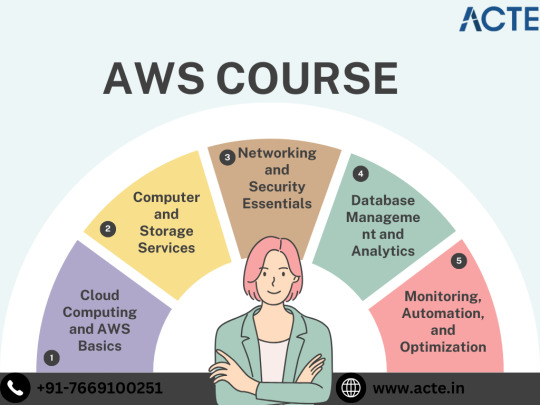
How AWS Helps Different Businesses
Startups & Small Biz
Startups don’t have to worry about investing in hardware. You pay only for what you use, and you can scale as you grow. Imagine running a new app without a giant upfront cost or IT infrastructure to manage. Sounds dreamy, right?
Enterprises & Large Companies
AWS scales up to handle massive workloads. Need to manage huge databases or run advanced AI models? AWS can handle it all. Plus, it’s compliant with global regulations, so you don’t have to worry about security.
Developers & DevOps
For developers, AWS offers tools to streamline development, from building apps to deploying them automatically. Whether it’s using Elastic Beanstalk for app deployment or CodePipeline to automate the release process, AWS makes life easier.
How to Get Started with AWS
Create Your AWS Account: It’s super simple to sign up. Once you’re in, you’ll have access to all AWS services.
Explore the Free Tier: AWS has a free tier that lets you try many services without paying a cent. Perfect for beginners!
Check Out the Docs: AWS has detailed tutorials and resources to guide you through setting up and using their services.
Scale When You’re Ready: As your needs grow, you can scale up your services without breaking a sweat.
Final Thoughts
AWS is changing the game when it comes to cloud computing. With its powerful features, scalability, and security, it’s no surprise that so many businesses trust it to run their operations. Whether you're just starting out or scaling big, AWS has everything you need to succeed.
So, what are you waiting for? Dive into the cloud with AWS and take your business (or project) to the next level.
1 note
·
View note
Text
AWS, Azure, and GCP: Pros and Cons for Developers
AWS, Azure, and Google Cloud Platform (GCP) are the leading cloud service providers. Each offers unique advantages and has certain limitations. Here's a breakdown of their pros and cons for developers:
1. AWS (Amazon Web Services)
Pros:
Mature Ecosystem: AWS has the largest number of services and the most mature ecosystem, providing solutions for almost any need.
Global Reach: AWS offers the widest global infrastructure with more data centers worldwide.
Developer Tools: A comprehensive suite of tools like AWS Lambda, CloudFormation, and CodePipeline for automation and CI/CD.
Extensive Documentation and Community: A vast array of tutorials, official docs, and a large community for support.
Rich Marketplace: Offers pre-configured machine images and services via its AWS Marketplace.
Cons:
Complex Pricing: AWS pricing models can be difficult to understand and may result in unexpected costs.
Overwhelming Options: The large number of services can be overwhelming for beginners.
Learning Curve: The platform’s depth and complexity make it challenging to master.
2. Azure (Microsoft Azure)
Pros:
Integration with Microsoft Tools: Seamless integration with Microsoft products like Office 365, Active Directory, and Windows Server.
Hybrid Cloud Solutions: Strong support for hybrid cloud environments, making it easier for businesses to transition to the cloud.
Enterprise Focus: Designed with enterprise developers in mind, offering great solutions for large organizations.
DevOps Integration: Built-in tools like Azure DevOps for CI/CD pipelines and project management.
Ease of Use: A more user-friendly portal and dashboard compared to AWS.
Cons:
Global Coverage: Slightly fewer regions compared to AWS, though expanding rapidly.
Linux Compatibility: Historically more Windows-oriented, though this is improving.
Documentation and Community: Smaller developer community compared to AWS, leading to fewer third-party resources.
3. GCP (Google Cloud Platform)
Pros:
AI/ML Capabilities: Industry-leading tools for artificial intelligence and machine learning, like TensorFlow and BigQuery.
Pricing Transparency: Simpler and often more affordable pricing structure compared to AWS and Azure.
Network Performance: Superior network infrastructure due to Google’s investments in fiber optic cables.
Developer-Friendly Tools: Focused on modern app development with Kubernetes (invented by Google) and serverless options.
Open Source Commitment: Strong emphasis on open-source technologies and tools.
Cons:
Fewer Services: While sufficient for most needs, GCP has fewer services compared to AWS and Azure.
Smaller Ecosystem: A smaller marketplace and community than AWS or Azure.
Enterprise Adoption: Less enterprise penetration compared to AWS and Azure, meaning fewer integrations for legacy systems.
Summary
Choose AWS if you need a vast array of services, global reach, and scalability. Ideal for mature projects and enterprises.
Choose Azure if you are already in the Microsoft ecosystem or need strong hybrid solutions. Great for enterprises.
Choose GCP if you're focused on AI/ML, cost efficiency, or modern app development. Ideal for startups and innovative projects.
Let me know if you'd like further insights or guidance!
0 notes
Text
From Zero to Hero: A Beginner's Guide to Building an AWS Lambda Function
Introduction In this comprehensive tutorial, we will guide you through the process of building a scalable and secure AWS Lambda function from scratch. AWS Lambda is a serverless computing service that allows you to run code without provisioning or managing servers. This tutorial is designed for beginners, and by the end of it, you will have a working AWS Lambda function that can be deployed to…
0 notes
Text
AWS is a Smart Choice for Beginners: Unlocking the Power of Cloud Computing
In today’s tech-driven world, cloud computing has revolutionized the way businesses operate, and Amazon Web Services (AWS) stands as a leader in this transformation. Professionals can get the skills and knowledge required to fully utilize AWS for a variety of applications and industries by enrolling in AWS Training in Pune.

If you’re just starting your journey in tech or seeking to enhance your skills, AWS offers a powerful platform with endless opportunities. In this blog, we’ll break down why AWS is a great choice for beginners and how it can open doors to exciting career prospects.
1. Rising Demand for AWS Professionals
Cloud computing is more than a trend; it’s the backbone of modern IT infrastructure, and AWS dominates this space. With companies in every sector adopting cloud solutions, the demand for AWS professionals is skyrocketing.
Diverse Career Paths
Acquiring AWS skills opens the door to various roles, such as:
Cloud Engineer
Solutions Architect
Data Analyst
DevOps Specialist
These roles are in high demand, and employers are actively seeking AWS expertise, making it an excellent career investment.
2. Easy for Beginners to Get Started
One of the best aspects of AWS is its beginner-friendly approach. Whether you have a technical background or not, AWS offers tools and resources to help you dive right in.
AWS Free Tier: This allows you to test and use AWS services for free, giving you hands-on experience without any financial commitment.
Step-by-Step Guides: Amazon provides tutorials and guides that walk you through setting up basic services like cloud storage, databases, and more.
Extensive Documentation: AWS offers detailed documentation for each service, helping you learn at your own pace.
3. Flexible Learning Options
AWS’s broad range of services might seem overwhelming at first, but you don’t need to learn everything at once. You can start with the essentials and gradually build your expertise.
Learn the Basics: Begin with foundational services such as EC2 for computing power and S3 for storage.
Scale Your Knowledge: Once comfortable, you can dive deeper into specialized areas like serverless computing (AWS Lambda), machine learning, or networking.
This scalable learning approach makes AWS accessible and manageable, even for complete beginners. Enrolling in the Best AWS Online Training can help people understand AWS’s complexities and realize its full potential.

4. AWS Certifications: A Boost for Your Career
AWS offers certifications that validate your knowledge and skills, making it easier to stand out in the job market. For beginners, the AWS Certified Cloud Practitioner is the perfect entry point, demonstrating your understanding of cloud basics.
Career Growth with Certification
Globally Recognized: AWS certifications are highly respected across industries, and employers often prioritize certified candidates.
Increased Earning Potential: Certification can lead to better job opportunities and higher pay, as employers are willing to invest in certified AWS experts.
Professional Validation: Earning an AWS certification boosts your credibility and shows a commitment to advancing your career.
5. Future-Proofing Your Career in Cloud Computing
The future of IT is in the cloud, and AWS is leading the charge. As more organizations move towards cloud-based infrastructure, professionals with AWS expertise will continue to be in high demand. By learning AWS now, you’re not only equipping yourself with relevant skills for today but also preparing for future technological advancements.
Conclusion
For beginners, learning AWS is a game-changer. Whether you’re looking to start a new career in tech or enhance your current skills, AWS offers a robust, beginner-friendly platform with plenty of growth potential. With the cloud computing industry booming and AWS at the forefront, now is the perfect time to embark on your AWS learning journey. By mastering AWS, you’ll be setting yourself up for a rewarding and future-proof career in one of the most exciting fields today.
#aws#aws course#aws training#tech#aws cloud#aws course online#aws services#aws certification#aws online training
0 notes
Text
Automating Everyday Tasks with Python: From Scripts to Solutions
Python is a very versatile language that can be used to automate a wide range of daily chores. It is well-known for its simplicity and readability. Python provides a wealth of tools and libraries to help you create effective scripts and solutions, regardless of your level of experience. Whether you are a novice hoping to optimize your daily routines or an expert looking to boost productivity.
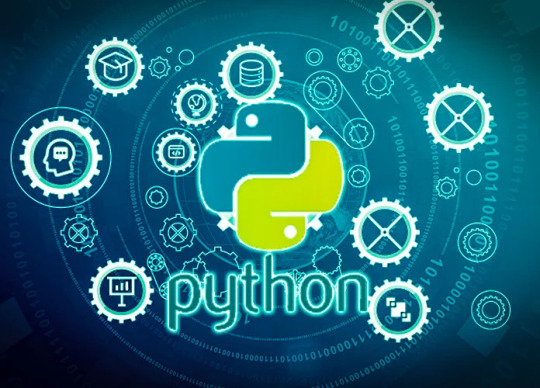
Why Use Python for Automation?
Python's large standard library, friendly community, and ease of use make it an excellent choice for automation. The following are some compelling arguments in favor of Python automation:
Readability and Simplicity: Python may be developed quickly and is accessible to beginners thanks to its simple syntax.
Broad Library: The Python ecosystem has libraries for email handling, file manipulation, web scraping, and other tasks.
Cross-Platform Interoperability: Python scripts are compatible with several operating systems, such as Linux, macOS, and Windows.
Community Support: You can fix issues and enhance your scripts with the support of a thriving Python community, which offers a wealth of tools, tutorials, and forums.
Common Automation Tasks
The following are some typical Python jobs that can be automated, along with succinct explanations of how to complete them:
File Organization
Handling files by hand can be time-consuming and prone to mistakes. File renaming, relocating, and deletion processes can be automated with the help of Python packages. To maintain your directories tidy and organized, you can, for instance, group files according to their type into different folders.
Internet Data Mining
With the aid of Python's libraries, information may be easily extracted from websites for purposes such as data collection, pricing monitoring, and web interaction automation. For example, you can obtain up-to-date forecast information without physically visiting a website by scraping weather data from it.
Automated Emails
Responding to emails might take up a sizable chunk of your day. You can automate email sending, receiving, and organizing with the help of Python's libraries. Sending a daily summary report as an attachment to a list of recipients is one example of an automated process.
Processing and Entering Data
Time can be saved, and errors can be decreased by automating data entry and processing. Large dataset handling and analysis are made especially easy by Python's robust data manipulation libraries. For example, you can read data from a CSV file and perform basic analysis to generate insights.
Scheduling Tasks
Python allows you to automate processes such as backups, report generating, and system monitoring by scheduling scripts to run at certain periods. For instance, you can set up a script to run every day and carry out standard system maintenance.
More Automation: From Scripts to Fixes
You can start with basic scripts and work your way up to more intricate solutions as you gain more Python experience. This might be creating user-friendly interfaces, combining several scripts into a single workflow, or putting automation scripts on the cloud to improve accessibility and scalability.
Combining Several Scripts
Streamlining a procedure by integrating different automation scripts can increase productivity. For example, you could write a script that gathers information from the internet, processes it, and emails you a summary report.
Creating Interfaces for Users
Think about creating graphical user interfaces (GUIs) with Python modules for automation that is easier for users to use. Non-programmers may be able to use your automation tools thanks to these interfaces.
Cloud Deployment
The scalability and accessibility of cloud platforms can be improved by deploying automation scripts. Scripts can be executed in reaction to events using tools like AWS Lambda, eliminating the need to manage servers.
Risk Management and Ethical Issues
Risk management and ethical considerations are crucial while creating automation systems. If automation is not properly controlled, it may have unforeseen repercussions. To reduce these hazards, strong risk management procedures must be implemented. This entails establishing sensible boundaries, varying the activities you do, and routinely evaluating and revising your scripts to account for evolving circumstances.
Conclusion:
Python is a great option for automating routine operations because of its vast library support and versatility. Python scripts may boost productivity, decrease errors, and save time for a variety of tasks, from basic file management to sophisticated data analysis and web scraping. With more practice, you may create more complex solutions that optimize the advantages of automation by combining several scripts, designing user-friendly interfaces, and deploying them to the cloud.
0 notes
Text
A Complete Guide to AWS Beginning: Study, Practice, and Excel
Welcome to the world of Amazon Web Services (AWS), a leading cloud computing platform that offers a plethora of services to revolutionize the way businesses operate in the digital age. Whether you're a seasoned IT professional looking to expand your skill set or a newcomer curious about the possibilities of cloud technology, this comprehensive guide will take you through everything you need to know to kickstart your journey with AWS. Learn everything there is to know about Amazon Web Services (AWS) by enrolling in this AWS Course in Pune.

Understanding AWS Fundamentals In this chapter, we'll delve into the basics of AWS, including its core concepts, terminology, and the benefits it offers to businesses of all sizes. You'll learn about key services such as compute, storage, networking, databases, and security, gaining a solid understanding of how AWS can empower organizations to innovate and scale their operations.
Exploring the AWS Ecosystem Next, we'll explore the expansive AWS ecosystem, diving deep into the myriad of services and solutions it provides. From virtual servers and storage solutions to artificial intelligence and machine learning capabilities, you'll discover the full range of tools at your disposal to build, deploy, and manage applications in the cloud.
Getting Started with AWS Now it's time to roll up your sleeves and get hands-on with AWS. We'll walk you through the process of setting up your AWS account, navigating the AWS Management Console, and launching your first virtual server instance. You'll learn how to provision resources, configure security settings, and monitor your usage to ensure optimal performance and cost-efficiency.
Mastering AWS Services In this chapter, we'll deep dive into some of the most popular AWS services, including Amazon EC2, Amazon S3, Amazon RDS, and Amazon Lambda. You'll learn how to leverage these services to build scalable, resilient, and highly available applications in the cloud, gaining practical insights through step-by-step tutorials and real-world use cases.
Building Your Skills with AWS Certification As you progress on your AWS journey, you may want to consider obtaining AWS certification to validate your expertise and enhance your career prospects. We'll guide you through the various AWS certification paths, from foundational to professional levels, providing tips and resources to help you prepare for your certification exams with confidence. Consider enrolling in AWS Certification Online Training courses provided by respectable platforms like ACTE Technologies for organized learning and in-depth information acquisition.
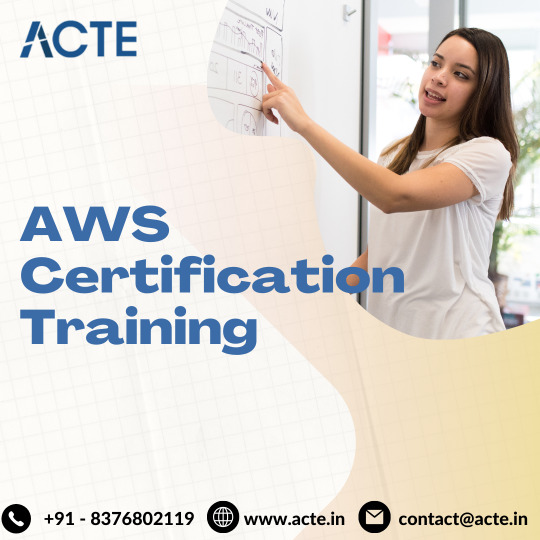
Advancing Your AWS Knowledge Finally, we'll explore advanced topics and best practices for maximizing your success with AWS. From optimizing performance and reducing costs to implementing DevOps principles and architecting scalable solutions, you'll gain valuable insights to take your AWS skills to the next level and excel in your cloud computing endeavors.
Conclusion: Congratulations! You've completed our comprehensive guide to AWS beginning, equipping yourself with the knowledge, skills, and confidence to thrive in the world of cloud computing. Whether you're a beginner taking your first steps or an experienced professional looking to expand your horizons, AWS offers endless opportunities for innovation, growth, and success. So go ahead, dive in, and let the journey begin!
0 notes
Text
Navigating AWS: A Beginner's Guide to Cloud Computing
Are you new to the dynamic world of cloud computing and eager to unravel the myriad possibilities offered by Amazon Web Services (AWS)? As a premier cloud service provider, AWS caters to a diverse range of needs for individuals and businesses. In this comprehensive guide for beginners, we'll guide you through the essential steps to kickstart your journey with AWS, even if you lack prior experience in cloud computing from The Best AWS Course in Bangalore.

1. Grasping the Fundamentals of Cloud Computing
Before immersing yourself in AWS, it's crucial to establish a solid understanding of the basics of cloud computing. This revolutionary technology involves delivering computing services such as storage, processing power, and applications over the internet. Embraced for its flexibility, scalability, and cost-effectiveness, cloud computing stands as a transformative alternative to traditional on-premises solutions.
Take a moment to acquaint yourself with foundational cloud concepts, including Infrastructure as a Service (IaaS), Platform as a Service (PaaS), and Software as a Service (SaaS). This foundational knowledge will serve as a robust base for your AWS journey.
2. Setting Up Your AWS Account
The initial step in harnessing the power of AWS is creating your own AWS account. Head to the AWS website (https://aws.amazon.com/) and initiate the account creation process by clicking on "Create an AWS Account." Follow the registration procedure, entering essential details such as email, password, and billing information. Be aware that certain services may offer free tiers, allowing you to explore AWS without incurring charges.
If you want to learn more about AWS , I highly recommend the AWS online training because they offer certifications and job placement opportunities. You can find these services both online and offline.
3. Navigating the AWS Management Console
Once your account is set up, you'll gain access to the AWS Management Console—a user-friendly, web-based interface for managing and configuring your AWS services. Take some time to navigate the console's layout and structure. AWS provides extensive documentation and tutorials to assist in comprehending each service.
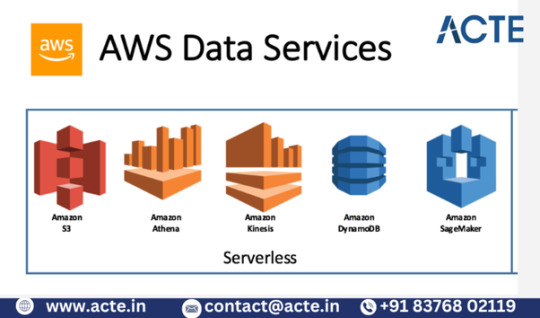
4. Exploring Key AWS Services
AWS boasts an extensive array of services, each designed to address specific requirements. In the beginning, focus on core services commonly utilized by many applications:
Amazon S3 (Simple Storage Service): Acquaint yourself with the intricacies of storing and retrieving data in the cloud.
Amazon EC2 (Elastic Compute Cloud): Understand the concept of virtual servers in the cloud and learn how to launch your instances.
Amazon RDS (Relational Database Service): Delve into managed database services, supporting popular database engines like MySQL, PostgreSQL, and more.
AWS Lambda: Dive into the realm of serverless computing, executing code without the complexities of provisioning or managing servers.
5. Engaging with AWS Training and Certification
For a comprehensive learning experience, explore AWS's training resources and certifications. Enroll in the AWS Training and Certification program to gain access to self-paced labs, instructor-led courses, and certification exams. Achieving an AWS certification not only validates your expertise but also opens doors to new career opportunities.
6. Immersing Yourself in the AWS Community
Forge connections with fellow AWS enthusiasts by participating in online forums, joining social media groups, and attending local meetups. The AWS community is known for its vibrancy and support, offering a platform for asking questions, sharing experiences, and staying updated on the latest developments.
7. Gaining Hands-On Experience through Projects
Solidify your understanding of AWS by engaging in practical, hands-on experience. Start with small projects, such as hosting a basic website on Amazon S3 or deploying a straightforward application on Amazon EC2. As your confidence grows, take on more complex projects to deepen your knowledge.
In Conclusion
Embarking on your AWS journey may seem daunting initially, but by following these steps and leveraging available resources, you'll gradually become adept at navigating the AWS ecosystem. Remember, continuous learning and hands-on experience are the keys to mastering cloud computing with AWS. Enjoy your exploration into the vast world of cloud computing!
0 notes
Text
What is AWS?
Sure! Here's a beginner-friendly tutorial for getting started with AWS (Amazon Web Services):
Step 1: Sign Up for an AWS Account
Go to the AWS website (https://aws.amazon.com/).
Click on "Sign In to the Console" at the top right corner.
Follow the prompts to create a new AWS account.
Step 2: Navigate the AWS Management Console
Once you've created an account and logged in, you'll be taken to the AWS Management Console.
Take some time to familiarize yourself with the layout and navigation of the console.
Step 3: Understand AWS Services
AWS offers a wide range of services for various purposes such as computing, storage, databases, machine learning, etc.
Start by exploring some of the core services like EC2 (Elastic Compute Cloud), S3 (Simple Storage Service), and RDS (Relational Database Service).
Step 4: Launch Your First EC2 Instance
EC2 is a service for virtual servers in the cloud.
Click on "EC2" from the AWS Management Console.
Follow the wizard to launch a new EC2 instance.
Choose an Amazon Machine Image (AMI), instance type, configure instance details, add storage, configure security groups, and review.
Finally, launch the instance.
Step 5: Create a Simple S3 Bucket
S3 is a scalable object storage service.
Click on "S3" from the AWS Management Console.
Click on "Create bucket" and follow the prompts to create a new bucket.
Choose a unique bucket name, select a region, configure options, set permissions, and review.
Step 6: Explore Other Services
Spend some time exploring other AWS services like RDS (Relational Database Service), Lambda (Serverless Computing), IAM (Identity and Access Management), etc.
Each service has its own documentation and tutorials available.
Step 7: Follow AWS Documentation and Tutorials
AWS provides extensive documentation and tutorials for each service.
Visit the AWS documentation website (https://docs.aws.amazon.com/) and search for the service or topic you're interested in.
Follow the step-by-step tutorials to learn how to use different AWS services.
Step 8: Join AWS Training and Certification Programs
AWS offers various training and certification programs for individuals and organizations.
Consider enrolling in AWS training courses or preparing for AWS certification exams to deepen your understanding and skills.
Step 9: Join AWS Community and Forums
Join the AWS community and forums to connect with other users, ask questions, and share knowledge.
Participate in AWS events, webinars, and meetups to learn from industry experts and network with peers.
Step 10: Keep Learning and Experimenting
AWS is constantly evolving with new services and features being added regularly.
Keep learning and experimenting with different AWS services to stay updated and enhance your skills.
By following these steps, you'll be able to get started with AWS and begin your journey into cloud computing. Remember to take your time, explore at your own pace, and don't hesitate to ask for help or clarification when needed. Happy cloud computing!
Watch Now:- https://www.youtube.com/watch?v=bYYAejIfcNE&t=3s
0 notes
Text
Demystifying Aws: A Beginner's Guide to Mastering Amazon Web Services:
AWS stands for Amazon Web Services, which is a comprehensive and widely used cloud computing platform provided by Amazon.com. AWS offers a vast array of cloud computing services, including computing power, storage, databases, machine learning, analytics, content delivery, and more.
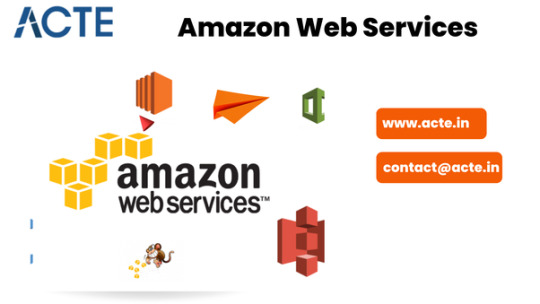
It allows individuals and organizations to access and utilize various IT resources over the internet on a pay-as-you-go basis, which makes it a popular choice for hosting websites, running applications, and managing data.
To learn about AWS, you can follow these steps:
1. Get Familiar with Cloud Concepts: Before diving into AWS-specific knowledge, it's essential to understand cloud computing fundamentals, including what it is, the benefits it offers, and the different cloud service models (IaaS, PaaS, SaaS) and deployment models (public, private, hybrid).
2. Official AWS Documentation: AWS provides extensive documentation and guides on their website. Start with the AWS Getting Started Guide, which will walk you through the basics of setting up an AWS account and using various services.
3. Online Courses and Tutorials: There are many online courses and tutorials available on platforms like AWS Training and Certification, Coursera, edX, Udemy, and Pluralsight. Look for courses that match your skill level, whether you're a beginner or have some prior IT knowledge.
4.Hands-On Practice: The best way to learn AWS is by doing. Sign up for an AWS account (they offer a free tier with limited resources) and start experimenting with different AWS services. Build small projects, set up virtual servers, create databases, and explore the various tools AWS offers.
5.Certifications: AWS certifications are highly regarded in the IT industry and can help validate your knowledge and skills. Consider pursuing AWS certifications such as AWS Certified Solutions Architect, AWS Certified Developer, or AWS Certified SysOps Administrator.
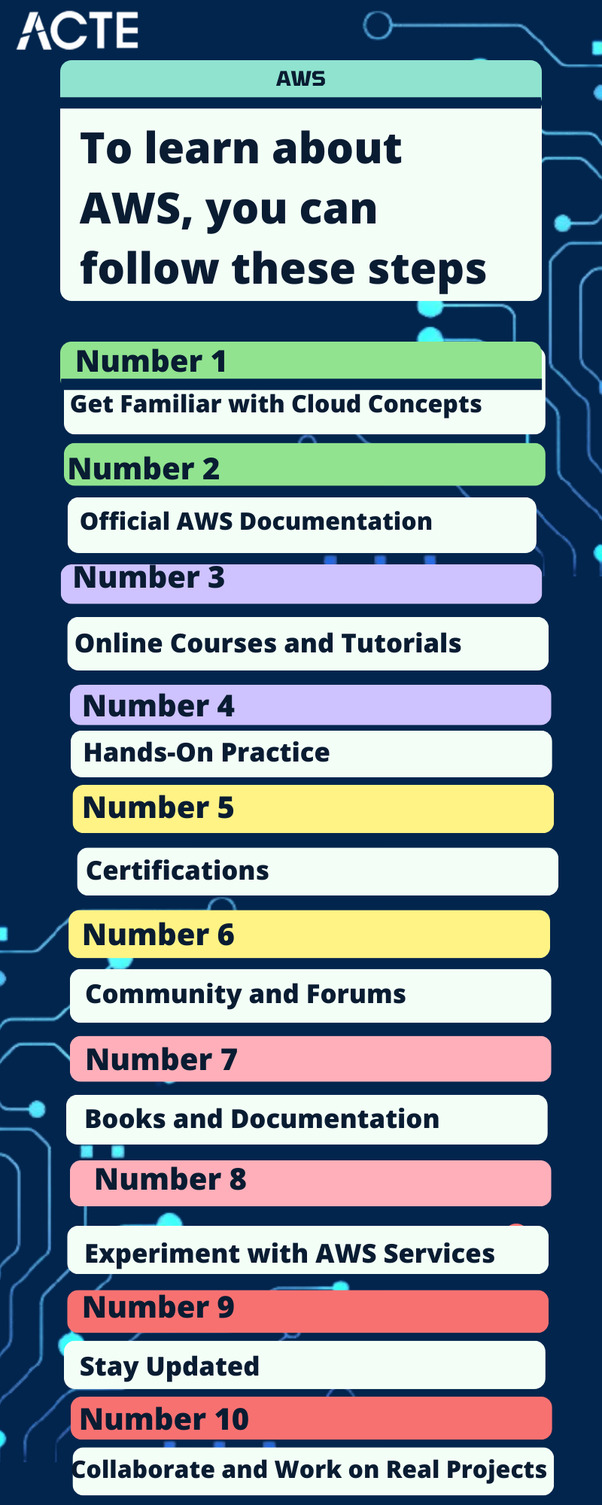
6.Community and Forums: Join AWS forums, communities, and user groups. This is a great way to get help, ask questions, and learn from others who have experience with AWS.
7. Books and Documentation: There are several books available on AWS, including official study guides for AWS certifications. Additionally, AWS provides detailed documentation for each service, which can be an excellent reference.
8. Experiment with AWS Services: AWS offers a wide range of services. Experiment with services like Amazon EC2 (for virtual servers), Amazon S3 (for object storage), Amazon RDS (for managed databases), AWS Lambda (for serverless computing), and more.
9. Stay Updated: Cloud technology evolves rapidly. Follow AWS blogs, news, and announcements to stay updated on the latest developments and services.
10. Collaborate and Work on Real Projects: If possible, collaborate with others on real-world projects or internships involving AWS. Practical experience is invaluable.
Remember that learning AWS is a continuous process, and hands-on experience is crucial. Start with the basics, gradually build your skills, and consider specializing in specific areas of AWS based on your interests and career goals.
To learn more, You can also check Amazon Web Services Course details at ACTE Technologies.
I hope you enjoy this answer.
Got a question for me? Please mention it in the comments section of this and I will get back to you.
0 notes
Text
The First Steps to AWS for Beginners
Starting with Amazon Web Services (AWS) can feel overwhelming, but breaking it down into manageable steps can help. Here’s a beginner’s guide to your first steps on AWS:
1. Create an AWS Account
- Go to the [AWS website](https://aws.amazon.com/) and sign up for an account. You’ll need a credit card for billing, though AWS offers a free tier with many services available at no charge.
2. Explore the AWS Management Console
- Once you have an account, log in to the AWS Management Console. This is where you can access all of AWS’s services.
- Familiarize yourself with the layout: the search bar, service categories, and the navigation panel.
3. Learn About Core AWS Services
Start with these basic services:
- Amazon EC2 (Elastic Compute Cloud): This allows you to rent virtual servers (instances) to run applications and websites.
- Amazon S3 (Simple Storage Service): A scalable storage service where you can store and retrieve any amount of data.
- Amazon RDS (Relational Database Service): A managed database service that supports multiple database engines like MySQL, PostgreSQL, and SQL Server.
- Amazon Lambda: A serverless compute service that runs your code in response to events.
- AWS IAM (Identity and Access Management): Manages permissions and user access to AWS resources.
4. Start with the AWS Free Tier
- The AWS Free Tier allows you to use a limited set of services for free, or at a low cost, for the first 12 months. This includes services like EC2, S3, Lambda, and more, at a restricted level.
5. Launch Your First EC2 Instance
- In the AWS Management Console, search for EC2 and follow the prompts to launch a new instance.
- Select an Amazon Machine Image (AMI), choose instance type, configure security settings (make sure to open the appropriate ports like HTTP/HTTPS), and start your instance.
6. Play Around with S3 Buckets
- Try creating an S3 bucket to store files. You can upload a file, configure permissions, and explore the features for managing your data.
7. Understand Billing and Cost Management
- Learn how AWS charges for its services. Keep an eye on your usage, especially if you're using the free tier, to avoid unexpected costs.
- Use the AWS Pricing Calculator to estimate costs.
8. Use AWS Documentation and Learning Resources
- AWS has comprehensive documentation for every service. Start exploring [AWS documentation](https://docs.aws.amazon.com/) for tutorials and guides.
- AWS also offers free training courses and certifications that can be a great way to level up your skills, such as the [AWS Cloud Practitioner Essentials](https://aws.amazon.com/training/) course.
9. Join AWS Communities
- AWS has a large online community, including forums, webinars, and meetups. Participating in these can provide additional learning opportunities and help you network.
10. Experiment with More Advanced Services
Once you’re comfortable with the basics, try exploring more advanced services like AWS CloudFormation (for infrastructure as code), AWS Elastic Beanstalk (for deploying applications), or Amazon SQS (Simple Queue Service).
By taking it step by step and experimenting with AWS services, you'll build a solid foundation for more advanced cloud development.
1 note
·
View note
Text
AWS Solution architecture training

Enhancing Cloud Skills: AWS Solution Architecture, AWS Lambda, Azure DevOps, and Terraform Automation
In the ever-evolving world of cloud computing, staying ahead requires a solid foundation in AWS and Azure technologies. This article focuses on key training programs and concepts that enable professionals to excel in AWS Solution Architecture, AWS Lambda, Azure DevOps, and infrastructure automation using Terraform. Whether you're a beginner or looking to expand your knowledge, these resources offer valuable insights and hands-on experience.
AWS Solution Architecture:
AWS Solution Architecture training equips professionals with the skills to design and implement scalable, secure, and efficient solutions on the AWS platform. Participants learn architecture patterns, service integration, security considerations, and cost optimization techniques. This comprehensive training ensures professionals can effectively plan, design, and deploy robust AWS solutions that meet specific business requirements.
AWS Lambda Tutorials for Beginners:
AWS Lambda, a serverless computing service, allows developers to run code without provisioning or managing servers. AWS Lambda Tutorials for Beginners provide step-by-step guidance on getting started with Lambda functions. Participants learn how to create functions, integrate them with other AWS services, and automate tasks. Through practical examples and hands-on exercises, beginners gain confidence in building serverless applications.
AWS Lambda Tutorials:
AWS Lambda Tutorials go beyond the basics, exploring advanced concepts and best practices for leveraging serverless computing. Participants delve into topics such as event-driven architectures, scaling, error handling, and deployment strategies. These tutorials provide in-depth knowledge and practical insights, enabling professionals to optimize the performance and efficiency of their serverless applications.
Azure DevOps Tutorial for Beginners:
Azure DevOps Tutorial for Beginners introduces Microsoft's integrated suite of development tools and services. Participants learn how to set up projects, manage source code, automate builds, and facilitate collaboration. This tutorial empowers beginners to embrace Azure DevOps as a comprehensive solution for streamlining software development processes.
Beginners' Guide to Azure DevOps:
The Beginners' Guide to Azure DevOps provides a comprehensive overview of Azure DevOps, covering all essential aspects from project management to continuous integration and deployment. Participants gain insights into managing work items, version control, build automation, and release pipelines. By following this guide, professionals acquire the skills to optimize their software development workflows using Azure DevOps.
Reusable Terraform Modules:
Terraform is an open-source infrastructure as code (IaC) tool that enables the provisioning and management of cloud resources. Reusable Terraform modules simplify infrastructure deployment by offering pre-defined configurations for various resources. Participants learn how to leverage these modules to achieve consistency, reduce duplication, and enhance productivity. By utilizing reusable Terraform modules, professionals streamline their infrastructure provisioning process.
AWS Infrastructure Automation:
AWS Infrastructure Automation training focuses on utilizing automation tools and services offered by AWS, such as AWS CloudFormation and AWS Systems Manager, to automate infrastructure deployment and management. Participants learn how to define infrastructure as code, automate resource provisioning, and configure applications at scale. This training equips professionals with the skills to streamline their infrastructure management processes and improve operational efficiency.
Keeping pace with the ever-changing cloud landscape requires continuous learning and hands-on experience. By investing in training programs focused on AWS Solution Architecture, AWS Lambda, Azure DevOps, and Terraform automation, professionals can enhance their cloud skills and meet the demands of modern IT environments. These resources provide the necessary knowledge and practical insights to design, deploy, and manage robust cloud solutions efficiently.
0 notes